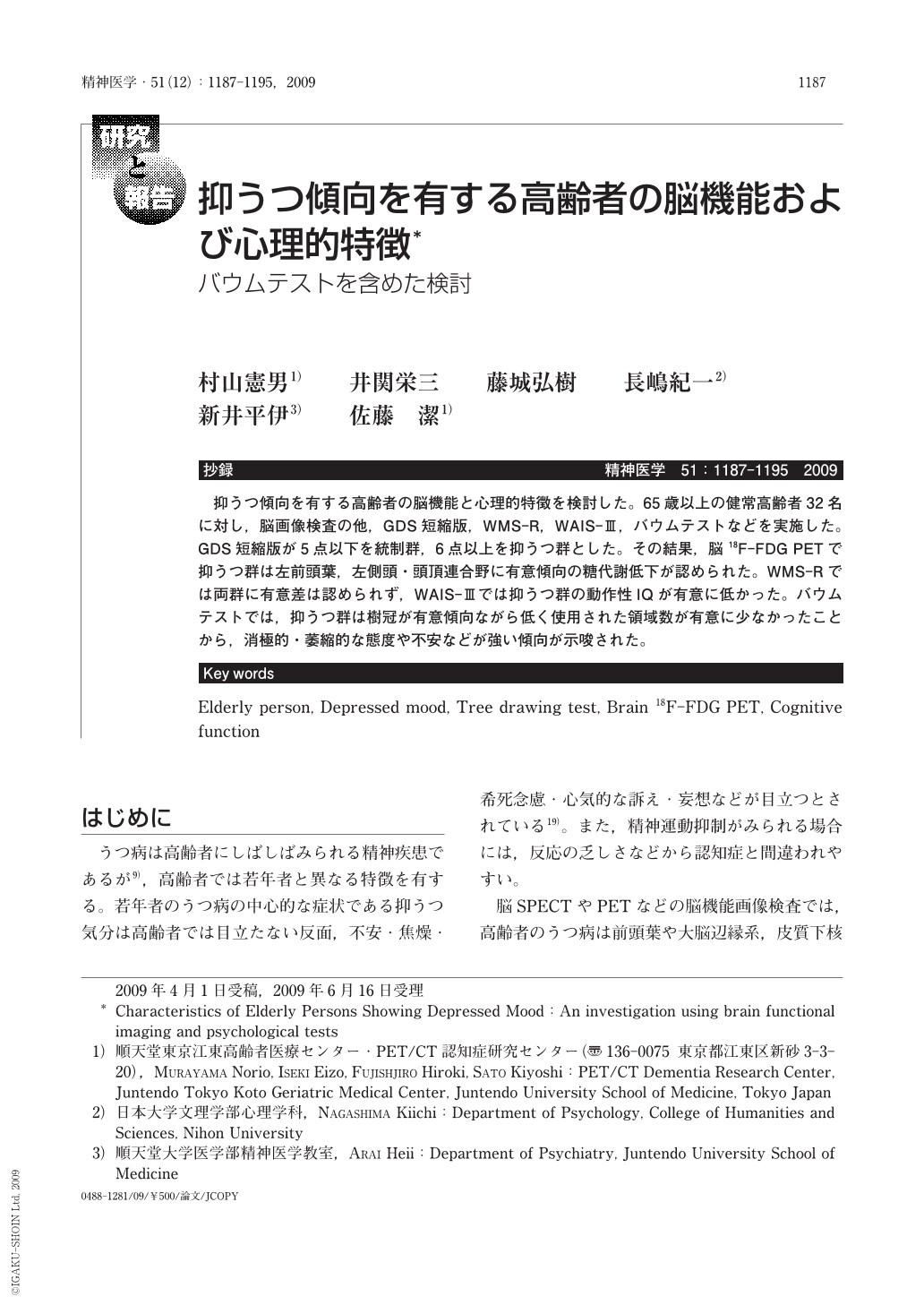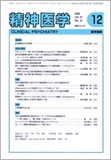Japanese
English
- 有料閲覧
- Abstract 文献概要
- 1ページ目 Look Inside
- 参考文献 Reference
抄録
抑うつ傾向を有する高齢者の脳機能と心理的特徴を検討した。65歳以上の健常高齢者32名に対し,脳画像検査の他,GDS短縮版,WMS-R,WAIS-Ⅲ,バウムテストなどを実施した。GDS短縮版が5点以下を統制群,6点以上を抑うつ群とした。その結果,脳18F-FDG PETで抑うつ群は左前頭葉,左側頭・頭頂連合野に有意傾向の糖代謝低下が認められた。WMS-Rでは両群に有意差は認められず,WAIS-Ⅲでは抑うつ群の動作性IQが有意に低かった。バウムテストでは,抑うつ群は樹冠が有意傾向ながら低く使用された領域数が有意に少なかったことから,消極的・萎縮的な態度や不安などが強い傾向が示唆された。
By using brain MRI, 18F-FDG PET, WMS-R, WAIS-Ⅲ, and tree drawing test (TDT), we determined the differences between elderly persons showing depressed mood but not fitting the DSM-IV criteria of depression (depression group, N=9) and those with no depressed mood (control group, N=23). Subjects with a geriatric depression scale (GDS) score of above 6 were assigned to the depression group and the ones with a lower score, to the control group.
On brain MRI, there were no differences in the degree of brain atrophy and cerebrovascular change between the 2 groups. On brain 18F-FDG PET, however, the depression group showed hypometabolism in the left frontal lobe and temporo-parietal association cortex, while the control group did not. There were no differences in the WMS-R scores between the 2 groups. Further, the depression group showed lower scores in the performance IQ of WAIS-Ⅲ than the control group. In the TDT, the depression group drew a tree with a lower canopy height and the tree occupied lesser drawing space than the control group.
Previons studies on depression have conflicting data:our findings in the depression group agree with some studies and disagree with some. In particular, the results of TDT suggested that the depression group had a more passive attitude to society than the control group.

Copyright © 2009, Igaku-Shoin Ltd. All rights reserved.


